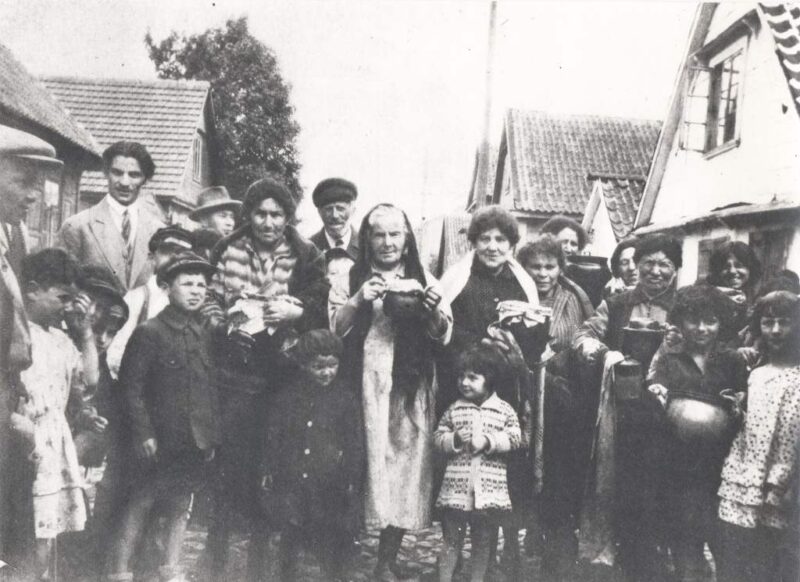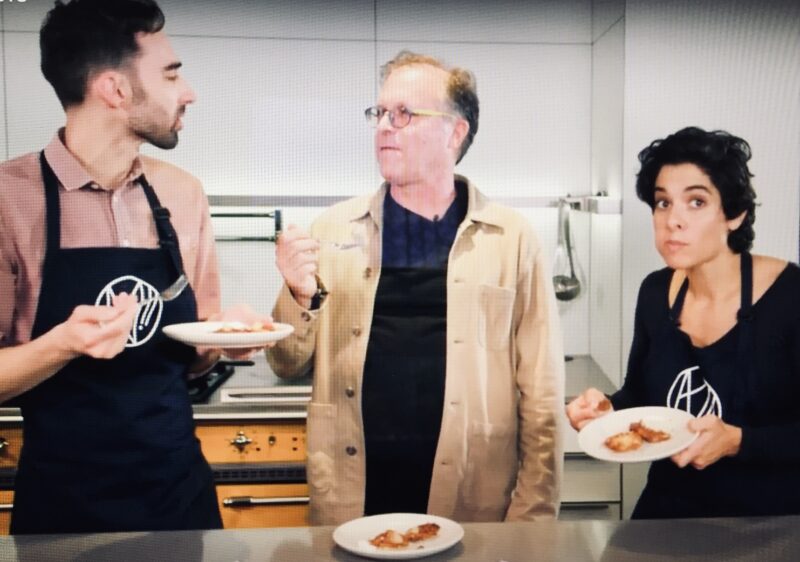Smoked salmon. Latkes. Corned beef. Dill Pickle. Matzah ball soup. Gefilte fish. Kugel. Tzimmes. Challah bread. Hamantaschen.
The wonders and flavors of traditional Jewish food seem infinite.

Yivo, the Institute for Jewish Research, would agree with that statement. It’s currently presenting a seven-week online educational course in Ashkenazic cuisine, and, due to the coronavirus pandemic, the lessons are free of charge.
A Seat at the Table: A Journey Into Jewish Food features more than 100 hours of digital content. Consisting of cooking demonstrations, lectures and panel discussions, the courses are hosted by a panoply of mavens from chefs to academics.
Judging by several preview videos, foodies will be interested in tuning in.
Michael Twitty, an African-American convert to Judaism, leads off with an astute observation that goes to the heart of the matter. Food is the predominant vehicle for joy in the Jewish world, he claims.

Josh Russ Tupper, one of the owners of Russ & Daughters in New York City, delivers a lesson in the art of smoked salmon slicing, which requires a sharp knife and a steady hand. By his reckoning, you should be able to read The New York Times through a finely-sliced layer of lox. It took him three weeks to become proficient in this craft, but others need more time to get the hang of it.
Tupper’s shop on the Lower East Side sells 12 types of smoked salmon, and each version has a different level of smoke and fat. Historically, smoked salmon has been a Jewish food, says Tupper. “But now, luckily, it’s universal and everyone loves it.”

Jake Dell, the fifth generation proprietor of Katz’s, the oldest deli in New York, argues that delicatessens have been an integral part of Jewish culture for more than a century. Katz’s opened in 1888 and has hardly changed since then, he says.

Pastrami sandwiches outsell corn beef sandwiches by a 2-1 margin, so it’s not all that surprising that Katz’s sells 20,000 pounds of pastrami per week. As Dell points out, pastrami is cured in salt and various spices, smoked, boiled and steamed, and then sliced by hand against the grain of the meat.

Jeffrey Yoskowitz and Liz Alpern, the owners of The Gifilteria, an Ashkenazic-style restaurant in New York, join the Mexican-born scholar and author Ilan Stavans for a primer on the Latino latke. It’s covered in a spicy chocolate-based mole sauce, but Alpern and Yoskowitz add two traditional East European sides — apple sauce and sour cream — and thereby enhance their experience.

Barbara Kirshenblatt-Gimblett, a Canadian academic, holds forth on the beloved bagel, which, in her opinion, is essentially a boiled and baked pretzel. Traditionally eaten as a snack in Europe, the bagel came into its own in the United States thanks to a revolutionary bagel-forming machine that enabled bakers to mass market their product. In her judgement, purists prefer simple bagels rather than fancy ones flavored with exotic condiments.
Jeffrey Yoskowitz, Liz Alpern and Darra Goldstein, a retired professor of Russian and a food book author, discuss the building blocks of the Ashkenazic kitchen. The vital ingredients include dill, rendered poultry fat (schmaltz), kasha, garlic, onions, dried mushrooms, butter and farmer’s cheese (pressed cottage cheese).

Hasia Diner, a historian, reminds viewers that about three million European Jewish immigrants landed in the United States in the late 19th century and early 20th century. Accustomed to scarcity and hunger in Europe, they discovered cheap and plentiful food in great abundance in America.

As Diner points out, different Jewish communities engaged in gastronomic exchanges. Citing an example of foods which migrated into the Ashkenazic diet, she tells of German Jewish newcomers who wandered into Levantine stores and, much to their delight, learned to enjoy the pleasures of halva and olives.
A Seat At The Table delves into these topics with enthusiasm and vigor and offers viewers an opportunity to broaden their culinary horizons.

